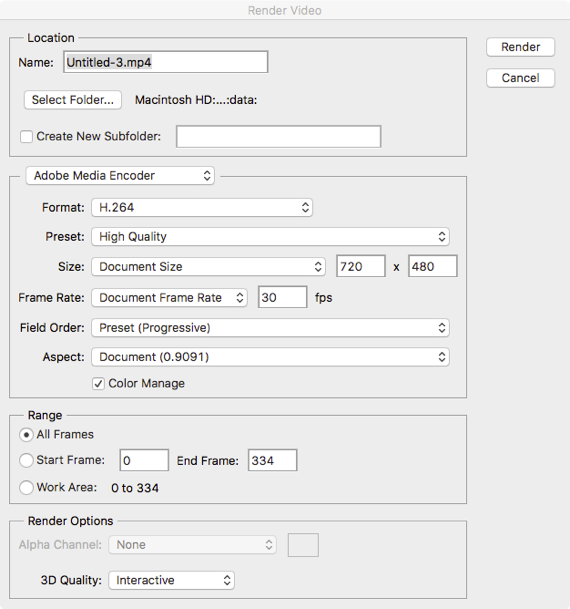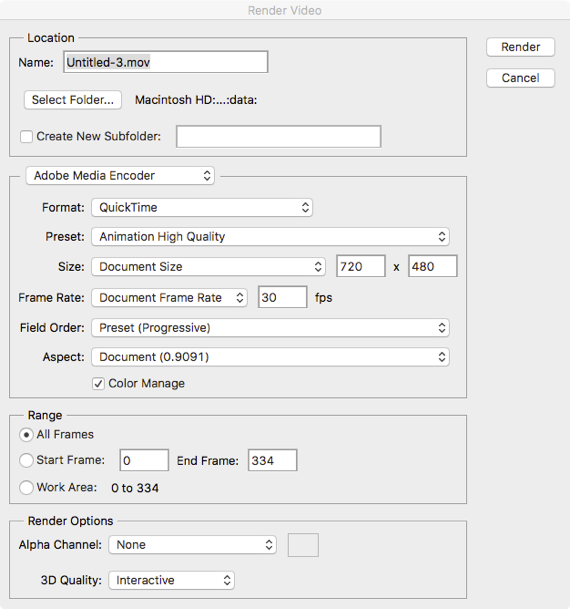
COMPILING ANIMATION FRAMES INTO A VIDEO (THROUGH THE USE OF PHOTOSHOP)
For this workshop we created a seres of still animation frames in Processing and exported them to a "DATA" subfolder of the Processing sketch. At this point, there are several options for compiling the series of still images to a single video file format. Within the School of Architecture this includes Quicktime Pro or OpenShot (public domain software) on the Apple OS Platform. Windows options include the use of Adobe Premiere. However, due to stability and compatibility issues with the School's network, the easiest pathway is to use Photoshop. These notes provide the essential steps and refer to online documentation provided by Adobe for greater details.Note that for explorting video, some standard HD video aspect ratios and pixel dimensions are:
960 x 540 (HD540)
1280 x 720 (HD720)
1920 x 1080 (HD1080
At this time it's recommended that you use either HD540 or HD720 due to performance issues with respect to higher resolution images in Processing.
From within Photoshop, these steps are specified on the adobe.com website:
Import image sequences:
Import video files and image sequences in Adobe Photoshop
https://helpx.adobe.com/photoshop/using/importing-video-files-image-sequences.html
Export video files or image sequences:
Save and export video and animations in Photoshop - Adobe Support
https://helpx.adobe.com/photoshop/using/saving-exporting-video-animations.html
During the export setup process, the "mp4" and the Quicktime "mov" file format options are likely to be most compatible with other technology we will be using in the course.
In the "Render Video" export dialog box, for the "mp4" file format, the following settings may be typical. Note especially that:
1. The video encoding "Format" is "H.264"
2. The "Preset" of "High Quality" is used for best image quality and lower image compression.
3. The "Aspect" of "Document t (0.9091)" is used to retain the original resolution of the single image fames at 720 pixels x 480 pixels.

In the "Render Video" export dialog box, for the "mov" file format, the following settings may be typical. Note especially that:
1. The video encoding "Format" is "Quicktime"
2. The "Preset" of "Animation High Quality" is used for best image quality and lower image compression. The alternaive "Preset" option to consider would be the "No Compression" option that preserves the original image quality at a much higher file size.
3. The "Aspect" of "Document (0.9091)" is used to retain the original resolution of the single image fames at 720 pixels x 480 pixels.
